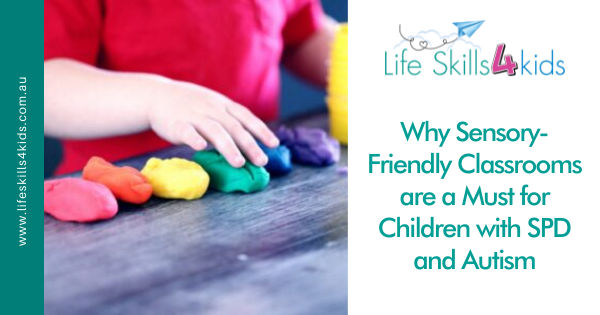Brain Research Reveals Clues
Children with Sensory Processing Disorder share many characteristics with those on the autism spectrum. In fact, there has long been a debate about whether SPD should be classified under the umbrella of autism, and professional opinion has remained divided until recent research revealed some distinct differences in brain structure.
Comparing Brain Structure in Kids with Autism and SPD
Elysa Marco and associates, researchers at the University of California, San Francisco, conducted a study that compared the brain structures of boys with an autism diagnosis, those with a sensory processing disorder diagnosis and those that were developing normally. They found a quantifiable difference between the boys with an SPD diagnosis when compared to those with typical development, proving that the disorder is rooted in biological factors. The questions then turned to how the brains of these children compared with those that have other neurodevelopmental disorders such as autism.
Sensory Similarities between Autism and Sensory Processing Disorder
The research examined the structural connectivity in areas of the brain that process sensory stimuli and found decreased connectivity in these areas in the boys with autism as well as those with SPD. However, there was a divergence when it came to the areas of the brain responsible for social-emotional processing. The boys with autism showed decreased connectivity in these areas, while those with SPD did not. Another crucial difference between the two diagnoses was the lack of repetitive behaviours in the SPD group, along with other distinctive indicators of autism.
It’s not just Theory
This finding translates into the classroom as well. Children with SPD actually want social and emotional connections but may find the sensory stimulation of connection overwhelming. Children with autism have less interest in social and emotional connections and may struggle to form friendships or interact in socially acceptable ways with peers.
How a Sensory-Friendly Classroom Fills the Gap
As many teachers and professionals know, children with SPD and autism struggle to cope with sensory overload or specific sensory triggers. When teachers and professionals get the balance right, the classroom can become a safe place where triggers are less likely to occur. When these kids feel safe, they can relax and begin to learn rather than being in a constant state of fight-or-flight, living in fear of a new experience or a reaction to one.
Tips for Creating Sensory-Friendly Classrooms
As teachers, parents and professionals know, children with sensory processing issues do best when they know what to expect and their environment is comfortable. Keep these tips in mind to create a sensory-friendly classroom that is a safe space for students that need extra help in this area.
- Create daily routines and stick to them
- Use visual cues to help students know what is coming next
- Allow time for sensory breaks to prevent sensory overwhelm
- Work with students to establish a signal when they are feeling overwhelmed
- Have a plan in place to manage situations before they turn into meltdowns
- Make sure that the environment is comfortable with lighting levels, temperature and air quality
- Create “quiet zones” and allow students to retreat to these if they are feeling overwhelmed
- Provide headphones to block out classroom noise when students are sensitive
- Allow students to use alternative forms of seating
- Provide advance warning using visuals or other cues when changes of routine occur or a one-off event is coming up, such as a fire drill or excursion
The Next Step
As parents and professionals, we want all our kids to thrive in the classroom, regardless of the hurdles they face. Creating sensory-friendly classrooms doesn’t need to be difficult or costly and it can make a huge difference to the kids that struggle with sensory issues. If you would like to know more about what you can do to make sensory-friendly classrooms, check out my classroom detox program. Or you can contact us here if you have questions. We would love to hear from you!
ALEX LEARNS FLIPBOOK
Alex loves school. He enjoys all the activities he does during the term such as swimming and soccer. He also loves holidays and all the fun things he gets to do while he’s not at school. The problem is, Alex doesn’t like changes. His tummy gets all tight and he gets a worry cloud that comes over his brain and makes it feel foggy. When the school term ends and holidays begin or when school is about to start again, Alex feels really worried and anxious.
When you purchase the Alex Learns that Changes are OK (Flipbook), you will receive a digital flipbook that gradually changes from one page to the next while listening to high-quality audio narration as if someone is flipping and reading the book for you!


